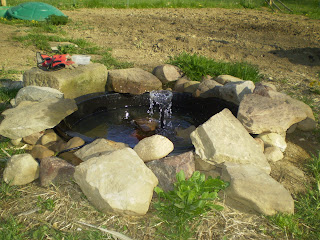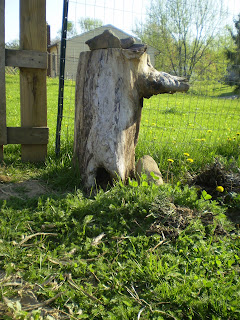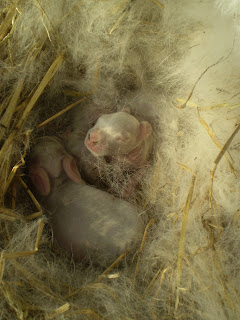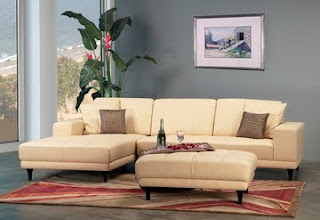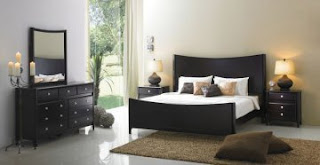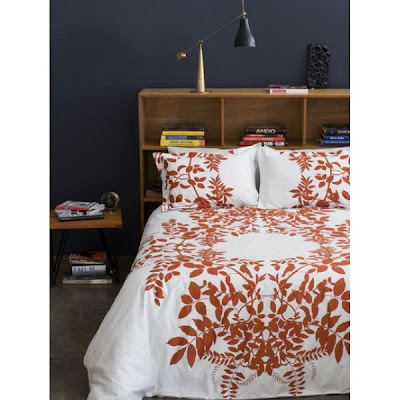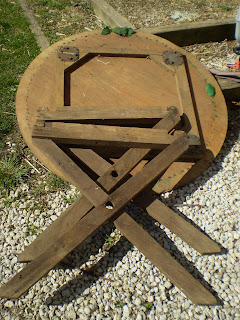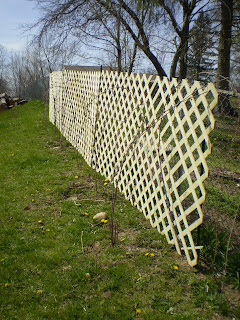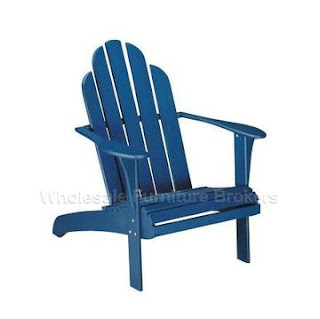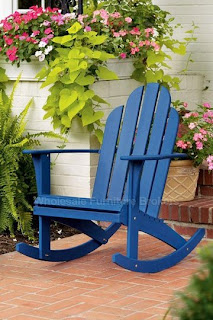Eero Saarinen as the Greatest American Architect
Heather Bourgeois
Without even realizing it, people move throughout spaces, sitting, standing and existing. They cook, clean, sleep, eat and shower in the spaces of their homes, work and other buildings. These places are filled with furniture. And while these spaces and furniture may seem unimportant and cluttered with stuff, they have an affect on our lives. The space we live in and the furniture that is in it directly affects how we feel about our lives, our moods and the way we live our day. One of the ways we are directly affected is through the idea of comfort. Whether we have a good night’s sleep or bump our heads on the top of a cabinet, slam our fingers in our dresser drawer or trip up our stairs, our days are dependent on our comfort and our coexistence with the things that fill our space.
The people in the art world who design the objects that have this effect on our lives are furniture designers, architects and interior designers. They decide what furniture works with styles of the year, past and future styles, and design the actual frames of furniture and their fabric. These designers also set up the furniture and produce full scale drawings of all of the pieces, how they work with other elements of the room and also draw the buildings which hold these objects. Some designers take on all three roles, working in the idea of Total design, where the architect designs the home or building and all of the furniture and even the interior decorating and design inside of it. Two of these designers were Eero Saarinen, a Finnish-American architect, furniture designer and interior designer and American Frank Lloyd Wright.
Many people in the art world see Frank Lloyd Wright as the greatest American Architect. What few people understand is how little he took into account the idea of comfort and it’s importance to the client and the piece itself. I am studying Eero Saarinen and his work in contrast to Frank Lloyd Wright to find out why there is a lack of research and recognition on his architecture and designs and to help readers understand more about the architect who should be known as the greatest architect of all time but is relatively unknown and severely underestimated. This will also help readers to understand the importance of comfort in design and how the way American values and ideals of comfort are shaped by design.
The importance of the designer to its client is shown in how they translate their ideas from their imaginations, to the paper and then from concept to reality. They create the spaces we live in, and because we most of what we do revolves around our homes; and our homes become an essential part of our lives. We spend a large amount of time in our homes, in our furniture, too much, in fact, not to love where we live and what we live in.
Therefore, The architect who we call ‘the greatest architect of all time’ needs to be one who takes this into consideration. This, I believe should be Eero Saarinen, because unlike Frank Lloyd Wright, Saarinen took into account the comfort of his client when building his homes and furniture and how they would use it and in what room, while Wright was focused more on traditional art elements and organic design, as well as monetary gain. Wright became so popular and famous that people sacrificed their comfort to have pieces and homes that he made, while Saarinen, who created pieces that met the customer’s needs flew under the radar, unrecognized as the true great American Architect.
In this paper I will pose a number of questions, asking first why there is a lack of recognition for Eero Saarinen and I will call into question why Frank Lloyd Wright is known as the Greatest Architect of all time and not Saarinen. Of this I ask-what are the requirements attached to this title. Of Wright I ask, how can you be the greatest architect of all time if you don’t keep your clients comfort in mind?
This relates to the large field of American Studies because one could wonder what this says about the way we live as Americans? Are we more likely to choose style, design and popularity over comfort? And lastly, how important is Comfort in Design?
Through my research and close readings of both of the architect’s works and the use of Vincent Scully, one of Eero Saarinen’s greatest critics and Frank Lloyd Wright’s most famous biographic writer, we can see the opposition to Frank Lloyd Wright. This will show my belief that while Wright’s work is respectable and pushed boundaries, Eero Saarinen’s work needs to be reexamined so that he too can have the respect and recognition that his work deserves.
Frank Lloyd Wright and Eero Saarinen were complete and total opposites in everything from their designs, architecture, interior design and furniture design and also in their personalities. They were complete opposites both stylistically and conceptually, from how their pieces were completed down to the very thought processes behind them. Both took the individual client into account, as well as form and function, but Saarinen was more about the form than function, while Wright thought that form and function should be one. Saarinen also took into account comfort in his furniture, which Wright did not. He took into account how every aspect of his furniture would be integrated into his home, but not the client that would be sitting in it.
Saarinen’s designs were so different that “As Philip Johnson later said, nobody would believe that many of Saarinen’s buildings could be by the same architect “because they represent such violently different attitudes” (Roman 14). These violently different attitudes are also existent when making comparisons between Frank Lloyd Wright and Saarinen in their furniture design in a stylistic approach. Conceptually they are very similar, with the idea of a holistic, organic approach to architecture and design, but stylistically they are completely different. Saarinen uses curvilinear lines and forms to the body for comfort and organic shape, while Frank Lloyd Wright considers nature, but not in the aspects of his client and the nature of how long they may be able to take a seat in his chairs. One of the formal elements of design, line, is especially important in critiquing both of these designers’ pieces. The curvilinear lines of Saarinen’s work are much more effeminate and suggest a softness and warmness that is not conveyed by Wright’s hard material and hard lines, and his bold stripes. Everything in his homes is clean, but rugged, hard but simplistic.
They are both very simple designers, keeping things to a bare minimum, perhaps a product of their time, after World War II.
I believe this did not just influence Saarinen and Charles Eames in their organic design competition but also in their future designs. Both Saarinen and Wright fought against traditional and classical designs to create modern, yet out of the ordinary and amazing pieces of architecture and furniture, but came out with completely different designs. The time after World War II and furniture and homes being mass-produced left a time for gain for both designers. People had money and could suddenly spend it, with the rise of the nuclear family and notions of Americanism. This left great opportunity for building, and both of these great architects took advantage of this to design some of their most amazing pieces, like Wright’s Falling Water at Bear Run, PA and Unity Temple in Oak Park, IL and Saarinen’s Gateway Arch in St Louis and his TWA Terminal at JFK Airport. By looking at these four architectural structures and the furniture created by the two architects, we see the differences in their work stylistically and conceptually in order to prove the worth of Saarinen’s work.
Two of Saarinen’s greatest structures, The Gateway Arch at St. Louis Missouri and the TWA Terminal at JFK Airport show his strength as an architect and his ability to compete in the design arena of designers like Wright and arguably making him a greater architect than Wright. By looking at both Saarinen and Wrights work, one can see the great abilities of both of the designers and how their work changed the face of design. Also, by looking at their designs together and in contrast, one can see how Saarinen might have been overlooked, why this is wrong and why he should be looked at as the greatest American architect of all time, instead of Wright.
Saarinen’s TWA Terminal at JFK Airport in Queens, New York was built from 1956-1962, and was one of Saarinen’s most famous structures. Although he is still not as critically acclaimed or as popular as Wright, the structure itself has the ability to stand up to Wright in terms of design. TWA, or Trans World Airlines hired Saarinen to create the structure after seeing his work for General Motors Technical Center, and Saarinen began his research on the structure. Because it was for an airport, naturally Saarinen had to take into account his client, only this time; it would be for hundreds of thousands of clients daily, not just the one commissioning him to do the project. Saarinen was famous for his curvilinear lines, in contrast to Wrights hard and strong straight lines. He chose “rounded, pseudo-triangular” lines so that the “curved plan was also a response to the building’s site” (Roman 43). Saarinen’s abilities as an architect area also shown in his objectives for the TWA Building, in his book “An Architecture of Multiplicity”, Antonio Roman writes that Saarinen’s other principle with the Terminal was to design “a building which the architecture itself would express the drama and specialness and excitement of travel”, Roman also explains that this was “evident in the shell-like roofline…it’s swooping, uplifted form was specifically intended to convey a feeling of motion and lightness” (Roman 46). His greatness in architecture can also be described within the Terminal in his ability to design in terms of sketching. He pushed boundaries in ways that Wright did not, which I believe also elevates him to Wright’s level in terms of pushing the envelope. Saarinen pushes the envelope in design by using the TWA Terminal so that it represented the first case in design that presents “a unique case in contemporary architecture, perhaps the first one documented in which the inverse procedure was followed: First they built models and then they used the small structures to elaborate drawings” (Roman 46). According to Roman, through the Terminal and his process for design, Saarinen composed more than six hundred drawings for the Terminal and the complexity of his designs. Roman explains the importance of his work with models on the Terminal, saying that the work shows the importance of the process because of the importance of “process-making rather than mere project-drawing. Working with models, with a methodology based more upon bricolage than projection through drawing, allowed for unexpected results, and this explains the complexities of the forms in the finished building” (Roman 53). He also explains how Saarinen’s drawings set a “precedent for present-day architects…who design through an extensive modeling process” (Roman 53).
Unfortunately, Saarinen died before the structure was completed. Only one of its ‘flight wings’ was completed. These wings were supposed to be reminiscent of bird wings, taking flight and freedom. He designed the project during the space age, and the large, curvy lines and free flowing space made the structure open both on the inside space and the outside lines. “Many critics associated the terminal’s form with a bird spreading its wings. Saarinen himself described his first proposal for the terminal as ‘pigeon-toed’ and later referred to the building as a ‘Leonardo da Vinci flying machine’. Publicly, however, he maintained that any association between his design and any sort of winged creature was purely unintentional. ‘The fact that to some people it looked like a bird in flight was really coincidental, That was the last thing we ever thought about…any resemblance to anything other than a piece of architecture is purely in the eye of the beholder or in the editorializing of the ‘trend-makers’” (Roman 61).
The second great building of Saarinen that I would like to address is the Gateway Arch in St Louis Missouri. This was also known as the Jefferson National Expansion Memorial, built from 1947-1965. This too was incomplete when Saarinen suddenly died. This served as an iconic structure for St. Louis and was actually commissioned by President Franklin D. Roosevelt.
This structure itself relates to the wider field of American Studies because it has connections to the expansion of the west, manifest destiny and other ideas that are part of greater themes in the American Studies discourse. The theme of the project was supposed to “perpetuate the memory of Thomas Jefferson…and the Louisiana Purchase” (Roman 133). His buildings “used dynamic forms and structural innovations to capture the optimism of mid-20th century America, while their variety came to represent a national ideal of unbounded choice” (Eero Saarinen: Shaping The Future ).
This project also pushed architectural boundaries. “At the time of its construction, the Gateway Arch represented the greatest stressed-skin construction ever undertaken. Engineer Fred N. Severud, whom Saarinen had contracted to oversee the memorial’s structural engineering, compared the structural behavior of the arch’s triangular section to a blade of grass” (Roman 132). The structure stood at 632 feet at its tallest peak and “The hollow interior of the arch…was used to shelter a staircase and mechanical transportation system that would ferry visitors up to the arch’s peak” (Roman 133).
The structure is a tall arch and a prime example of Saarinen’s style. He chose an arch in a hyperbole shape, with intense mathematical calculations and high arches. It stands on a lawn with many other buildings surrounding it, but is not obstructive of the views of the other buildings. From far away, it looks very thin, but up close the structure itself is quite large and livable. It houses elevators and staircases and a viewing tower at the top. It is a great example of the level of strength in Saarinen’s design because it shows how grand it could be, how in depth his drawings were and how complicated. He is not simply designing a room, but a structure that is over six hundred feet tall and has only two sides and absolutely no support in the center from the ground.
On the other side of the design spectrum stood Frank Lloyd Wright. Popular, driven by money and success and the ideals of organic design, he created works that shocked as well. However, Wright had much more visibility in the design world than Saarinen and had much less criticism for his work. To this day he is still more popular, as fans consider his work ‘classic’ and ‘worth a lot of money’.
One of the most iconic structures that Wright designed was Falling Water at Bear Run in Pennsylvania. It was created for the Kaufman’s of the Department store fame as a weekend home. According to the website for the Kaufman’s and Falling Water, it was built over a thirty foot waterfall and “doesn’t appear to stand on solid ground”. It was made for Edgar Kaufmann Sr. as a ‘mountain retreat’ and considered to be “the greatest example of American Architectural Design” (Fallingwater | Home).
However, I challenge the reader and viewer of architecture to contrast this structure and the next structure I will touch on later in my paper, Unity Temple, with Saarinen’s structures. Saarinen’s Gateway arch was mathematically shocking and visually impressive, and his terminal at JFK was completely modern and different in design and shape than any other airport terminal. Both of Saarinen’s designs broke boundaries in ways that even Wright didn’t and I challenge the reader to use those structures as comparisons to Wright when evaluating who really is the greatest architect of all time.
Falling Water was designed in a much more constricting way than any of Saarinen’s designs. He “limited the client with the color palette at Bear Run so only two colors were used. Ochre for the concrete and Cherokee Red for the steel so that Wright could have his ‘unified and organic composition.’”(Fallingwater | Home.) This is important in contrast to Saarinen, whose free flowing; curvy lines and open spaces made the client feel free and loose, while Wright made them feel confined to his expectations.
Carla Lind, writer of the book The Wright Style says in her section on Falling Water that Wright was moved by the nature of Falling Water. One of Wright’s biggest passions and inspirations was nature, and Falling Water was exemplary of his work. “Wright was moved by the beauty of its rock ledges, lush foliage, and rushing waters over Bear Run. The native vegetation, especially the rhododendron and mountain laurel, flourished in the moist shade….Built into the side of the hill, and over-not across from-the picturesque waterfall, its design was a celebration of the site” (Lind 99).
Ada Louise Huxtable, a writer of the biography of Frank Lloyd Wright, touched on the ideas behind Falling Water. She wrote “Although there are precedents for Falling Water in his own work, a new vision in present in those hovering, abstract, concrete slabs. There is a clear connection to the European Modernism that Wright spurned; he had obviously studied it, although the application he chose to make was organic in its relationship to the natural site. Unlike European buildings that maintained a cool aloofness from their surroundings, Wright’s slabs were tied to the earth, physically and symbolically, with rough local stone and natural textures and colors” (Huxtable 208-09). She also notes “legend has it that the house was designed almost instantaneously, under the pressure of an impending visit from Kaufman, who had been waiting impatiently for drawings” (Huxtable 209). This shows Wright’s talent as an architect and his capabilities. However, it is interesting to compare the talent of Wright who could come up with a drawing almost instantly and have it be considered one of the most famous and best examples of architecture in the United States, to Saarinen, who composed hundreds of drawings, only to be severely underestimated and unknown in comparison to Wright’s visibility. “In 2000, the American Institute of Architects voted Falling Water the Building of the Century” (Huxtable 212). What I question, as a viewer and critic of his work, is why Falling Water is considered this, and not Saarinen’s work. I question what makes one work better than another or the best? Another of Wright’s biggest inspirations was Unity and his religious background. He grew up with a Unitarian background and this guided his passion and desire to build Unity Temple in Oak Park, IL. He built this church “without a steeple, saying ‘Religion and Art are forms of inner experience’” (Boulton 43). Wright was very much influenced by money and according to Boulton “throughout his life Wright usually created his best architecture when he had an unlimited budget-or a severely limited one. Few commissions tested his abilities to design on a shoestring more than Unity Church. The congregation of about four hundred could afford only $45,000 to build a structure to house both their religious services and social activities” (Boulton 58). So, Wright was limited by money in this particular project, so he built the church out of concrete, which was inexpensive, and used wooden forms to hold it in place, according to Boulton. “The result was a structure of simple but powerful massing that reflected a perfect unity between the nature of the material and the needs of the congregation” (Boulton 60). In the inside of the temple, “There is no steeple pointing up to a "God-Out-There" in the distant heavens. Instead, you find a remarkable sacred space, a temple that stands foursquare, where no one is more than forty-five feet from the pulpit, where the congregation can see each other, and where all are invited to look into other human faces and find divinity there”
According to the website of Unity Temple, “In recognition of its historical and architectural significance, the U.S. Department of the Interior designated Unity Temple a National Historic Landmark in 1971”, Therefore establishing an importance in Wright’s designs.
The two designers were different in more ways than just their architecture. “Perhaps the most concise explanation of Saarinen’s design philosophy can be found in a statement by Saarinen about Frank Lloyd Wright. Saarinen regarded Wright as the greatest architect of his time because of Wright’s holistic sense. Of Wright, Saarinen said: “He did not conceive structure separately; his structure, his funny decorations, his spaces, his lighting were all one thing. Today we have all this ‘icky’ kind of architecture which is taken a little from here and a little bit from there.” It was this “icky” approach to design that Saarinen spent his life trying to remedy” (Fehrman 26).
However, both believed in the idea of Total Design, where the architect took on the roles of the building designer (traditional architect) as well as the interior designer, who furnished the space and the furniture designer, who designed the pieces that filled the space, down to the minute details, like chair cushions, lamps, fixtures and rugs. Within this idea of Total Design come the ideas of Furniture Design and how the two differed on this both stylistically and conceptually.
Saarinen’s architecture was stylistically much curvier, free flowing and fluid. He used long lines and open spaces, where one could feel unlimited in mind and soul, and structures reflected his ideals. Also like this, was his furniture, which also took on free flowing, curvy and long lines. It was comfortable, formed to the body and could withstand long amounts of time in it. Three of these pieces were Saarinen’s Grasshopper, Tulip and Womb Chairs.
The Grasshopper Chair has a sleek and curved back, designed not straight and to hurt your back, but to form with the natural line of your back so that you are more comfortable. The bottom of the chair lifts ones upper leg up and puts your body into more of a fetal position so that it is more natural and comfortable and can hold the body and make it better able to sit in it for long periods of time. According to the Knoll Museum website, “The Grasshopper chair was the first chair of many he designed for Knoll. The frame is made of laminated wood, which was the only material and process available at the time. It continued production until 1965” (Knoll).
Also important to design was Saarinen’s Tulip Chair. According to the modern design website Designwithinreach.com, which sells and stores information about timeless modern furniture, Saarinen’s Tulip Chair was “In a 1956 cover story in Time magazine, Eero Saarinen said he was designing a collection to "clear up the slum of legs in the U.S. home." Later that year, he completed his Pedestal Table and Tulip™ Chair Collection (1956) and obliterated the "slum" by creating a cast aluminum base inspired by a drop of high-viscosity liquid. The platinum enamel has a clear satin finish, while the black and white frames are reinforced bonded finishes that maintain their gloss through years of use. The comfortable Tulip Armless Chair has a swivel seat with a padded cushion.” This shows that Saarinen did have recognition for his work, but not nearly the level of Frank Lloyd Wright and his architecture, which received recognition not from the media, but from Architects and others in the art world. Perhaps most important to Saarinen’s furniture contributions was not only the Pedestal series and his Tulip and Grasshopper Chair, but his Womb Chair. This very chair epitomizes and proves my argument that Saarinen, unlike Wright, took into account the comfort of the client. The piece is full of circular, curvilinear lines, and forms to the body of the person sitting in it. He designed the chair for his wife, Florence Knoll, because she challenged him “to create a chair that she could curl up in” (Design Within Reach). So, Saarinen created a chair that had an “enveloping, lap like form” and “perfectly facilitated a relaxed sitting posture and a sublime feeling of security. Additional seat and back cushions and the coordinating Womb Ottoman provide a further degree of lavish comfort” (Design Within Reach). With Saarinen, the idea of comfort in design is epitomized in the Womb Chair, which is “considered by many to be one of the most comfortable contemporary chairs ever made. When conceptualizing the Womb chair, Saarinen was guided by two considerations, comfort and the unity of space and architecture” (Fehrman 24). Fehrman also explains that Saarinen was largely concerned with a few things, such as “human anatomy and it’s relationship to the furniture” and also ways to “accommodate ways in which we really sit, not in the way we ought to sit” (Fehrman 24). This was important in contrast to Frank Lloyd Wright, “whose main concern was the way the chair would relate to the architecture rather than to the sitter” (Fehrman 25).
Antonio Roman explains how this became criteria in Saarinen’s original designs, “The very notion of comfort had essentially been absent from the discourse of the avant-garde for some time. They preferred functionalist criteria when considering housing and furniture” (Roman 99). Saarinen understood that people today do not sit the same as our ancestors, or even those in our family line as recent as our grandparents.
Saarinen explained his design for the Womb chair was as a result of this and his way to design against it. “People sit differently today than in the Victorian era…they want to sit lower and they like to slouch” (Roman 99). Saarinen then interprets his thoughts on slouching into his designs for the Womb Chair by saying that he “attempted to shape the slouch in an organized way by giving support for the back as well as the seat, shoulders and head” (Roman 99). Roman also includes a quote by Saarinen himself explaining the need for furniture that is designed around the idea of comfort and the client and also still involves the history of furniture design. Saarinen said, “I designed the Womb Chair because there seemed to be a need for a large and really comfortable chair to take the place of the old overstuffed chair. These dreadnoughts disappeared from modern interiors…But the need for such chairs has not passed. Today, more than ever before, we need to relax” (Roman 99). Roman goes on to explain the human need to relax and how Saarinen was influenced by the field of Psychology, ideas of comfort and relaxation and the way Saarinen upheld “human impulse” as a priority to his design.
Saarinen took into account this human impulse in Psychology when designing the Womb chair by saying “The Womb chair also attempts to achieve a psychological comfort by providing a cuplike shell into which you can curl up and pull up your legs”, and Roman comments on this, saying “Saarinen was attuned to contemporary culture’s increasingly psychological orientation” (Roman 99). By using Roman’s analysis and the quotes from Saarinen, one can see how in depth an interior designer, furniture and architect must go to interpret the needs of his or her client. I propose that all designers should do this, because their main focus should not only be the design but the needs of the client, and especially in furniture design, it is important that these needs are taken into account, especially comfort.
In this particular situation with the Womb chair, Saarinen fully takes into account the comfort of his client, which also happened to be his wife, so that she was completely comfortable, in a fetal-like position and could curl up in the chair, rather than building and designing the piece specifically to be cohesive with the rest of a home or structure. This way, the piece will conform not to the building, but to the person.
In all three of his chairs, the Grasshopper, Tulip and Womb Chairs, “Saarinen’s process pushed the field of furniture design to its limits. By looking closely at the way people actually sit-or slump-he forged new forms and structures that, in his search for meaning, reflected a comprehensive modern attitude toward design, an attitude that enhanced human experience and the new challenges involved in contemporary life” (Roman 105).
Although they both Wright and Saarinen sought to create organic designs that worked with nature, they couldn’t have been more different stylistically. Saarinen, as previously mentioned, used flowing, curvy lines and comfortable fabrics and forms to work with the shape of the body and help the body be able to sit in the piece for long periods of time. Wright was the complete opposite. His Barrel Chair was uncomfortable and had hard arm rests with no padding, a short back and very little distance between the space for knees and the foot when sitting, while his dining room tables had tall, straight backs made of hard wood. The seat was also made of wood with a small lightly cushioned padding on the seat. His bold, hard and strong lines were uncomfortable and his furniture, made entirely out of wood and very little fabric (if that was even included), were not designed to the natural curve of one’s back or the shape of the body. They were not meant for leisurely activities and do not accommodate the body and relaxation. Relaxation is a vital part of the idea of comfort, and my thesis. I believe that the architect, designer, and interior designer we consider or claim as our ‘Greatest architect of all time’ should be one who takes into account their client and their comfort and relaxation, because as a race, as humans, we work hard. We deserve to be able to relax and our lives are very stressful. Because we spend a lot of time in our furniture and in our homes, we need to have furniture that complements our lifestyle, and an architect we call the ‘greatest’ should also complement this. The architect I believe does this is Eero Saarinen.
Unfortunately, for the last century most of America has not agreed with my point of view. Many people in the art world view Frank Lloyd Wright as the greatest American architect of all time, while Saarinen flies under the radar. However, I believe Saarinen was an amazingly detailed, thorough and talented architect who took into account his client’s needs to a deeply in-depth level, analyzing not only their immediate needs and wants for the space, but their psychological needs, and how their emotions and psychology affected the way they lived and how their furniture and the rooms they lived in affected them.
Wright, however, remained more popular, not only by the masses and consumption of the people of the United States, but by critics, art historians and the American Institute of Architects, which recognized him in 1991 as being the Greatest American Architect of all time. (http://www.pabook.libraries.psu.edu/palitmap/bios/Wright__Frank_Lloyd.html) Saarinen was also recognized by The American Institute of Architects for their Twenty Five Year Award for his works, like The Crow Island School in IL in 1971, Christ Lutheran Church in 1977, Dulles International Airport Terminal Building in 1988 and the Deere and Company Administrative Building in 1993 (AIA).
Although he was appreciated by the American Institute of Architects, he was also harshly criticized for his modern architecture and designs, especially by Vincent Scully. According to Roman, Scully “railed against Saarinen’s tendency to use whammo shapes in a critique that can only be described as hostile” (Roman 60). He frequently reviewed his work but argued against it, saying that he had “no identifiable style: one explanation for this is that Saarinen adapted his modernist vision to each individual client and project, which were never exactly the same” (Fehrman4).
This is especially interesting because Vincent Scully is one of Frank Lloyd Wright’s biggest supporters and researchers and has written many books on him. Frank Lloyd Wright’s biggest themes were about designing and creating homes that were harmonious, and this translated into his overall pattern of style and how his homes and buildings were designed. It could be seen and anticipated that although he would think outside the box, one also expected him to and his designs were consistent, stylistically. Saarinen’s designs were inconsistent, but this was because he kept the client in mind, designing to each specific client and their needs, not his own.
This is especially important in the field of design today, and has been for hundreds of years. In design, one must not let their own design preferences take over. The architect, interior designer and furniture designer needs to take into account the needs of the client, their psychology and what will make them feel most comfortable, rather than being consistent, but not giving the client what they need, only what you want. Wright consistently gave the clients great pieces, but he gave them great pieces that aligned with his vision.
The Falling Water house is a perfect example of that. Wright designed the house so that it only had two paint colors, constricting the creativity of any future homeowners, and he consistently did this in his structures, so that he could exhibit his need to control by designing everything in the home, from the roof to the floor, the chairs to the lamps and the colors of the paint, and everything had to be so detailed and so harmonious that the inhabitant was lost in the home, and could not find themselves.
This is still true today, because many homeowners and furniture shoppers consider homes and furniture of Wright because it is considered “classic” or “timeless” and it is worth money. However, it can be compared to a Stiletto heel. It can be timeless, like a pump, in fashion or style and have a great design, but can you wear it for very long? Is it comfortable or Practical? Does it really suit your needs or do you just want it because everyone else has it or because it is worth a lot of money?
Unfortunately these theories not only apply to the world of fashion and shoes, which is also closely interconnected to interior design, but to furniture design and architecture as well. They also apply to ideals of what makes a certain architect the ‘greatest architect of all time’. Many critics, like Scully, believed that Wright was the greatest architect of all time. They say that he gave the people what they wanted. He afforded the people privacy, the ultimate want of the American. He gave them their private houses in their post-war cul-de-sacs and ultimate American home, and gave them what he thought they deserved, an “American Architecture” (Ken Burns DVD). Furthering the thought that if the artist or architect thinks themselves to be the greatest architect of all time, does that make them so, or even strengthen that argument? He thought he was the greatest American architect probably more than anyone else, going as far to say “If I had another 15 years to live I could change the entire country.” He was well known for being extremely confident, even overconfident. (Ken Burns DVD). Wright was “recognized as one of the greatest pioneers of modern architecture because of his ideas on the function of form and material. He was one of the first to try linking architecture and furnishings to compose a harmonious whole.” But if that harmonious whole is not comfortable, does that really matter? Or is that disregarded because even the designer himself believes himself to be the “real, modern Da Vinci” and replies to questions with such comments as “When asked what he thought about being the greatest American architect that ever lived, he would say, “Forget American, forget living. I’m the greatest architect of all time.” (Ken Burns DVD).
While I believe that Scully makes interesting claims as do the other critics, I challenge these critics to revisit the works of Eero Saarinen and contrast him to Wright as the greatest American architect of all time. I believe that then, if the critics and the viewers, artists and designers alike revisited his work, they might be shocked like I was to find the depth he went to in order to create his works, and amazement of the works he did create, some of which I had no inclination that he created. Saarinen, while awarded, was deeply underestimated, and had he not died suddenly, I believe had the potential to be considered the greatest American architect of all time.
Perhaps Wright had more time in the world with us, and had a longer lasting effect on the design world. There are many elements that can be considered when looking at what makes someone the greatest architect of all time, from the voices and opinions of critics like Neil Levine, Vincent Scully and Carla Lind or Antonio Roman, or the collector of the furniture and the blue collar worker that favors the Wright Art Glass. Many consider the style of the architect or designer in relation to their own personal style, the amount of research on the specific architect, the money they earned or the amount of people that commissioned their work, or even the status of those who commissioned them to be indicators of the level of the work of the architect. Others might consider the popularity of the architect, how many people own the pieces or structures by them or even knock off’s that were inspired by them. If you are adored and have many fans and people love you, should that indicate whether or not you are the greatest architect of all time? Rather than taking into account more shallow perceptions of what makes a person great in the career, I believe it is important to look at art elements in this particular field, because after all, the designer is an artist. I believe in looking at both Traditional art concepts and Modernism and looking at the technique and complexity of concept for the artist. How hard, how long, how difficult to conceive was the idea? The process? How successful was the artist in their final design from the first conception of the idea? Furthermore, I challenge these viewers to use the elements of consideration and more to reexamine the work of Eero Saarinen to make the best educated decision as to who deserves to be the greatest American architect of all time.
I also propose to add another element to these considerations. What I believe is wrong with them is that they do not include the idea of comfort and psychology when considering the architect. I believe that if the considerations were made using comfort and psychology of the human sitting in the furniture and in the structure itself, the world might have a different opinion of Eero Saarinen and grow to love and appreciate him as I have in my research.
While researching both Frank Lloyd Wright and Eero Saarinen, other questions arose on the ideas surrounding comfort and design. One could begin to wonder how the way we choose our designs, our furniture, our homes and our rooms translates into who we are as a race or even individually. If we are more willing to choose the furniture that is uncomfortable and hard on our backs, simply because it is “classic” and easily recognizable, but willing also to sacrifice our comfort, relaxation and the chance to decrease our levels of stress, what does this say about the way we live as Americans? The issue of comfort in design and how it is translated by larger designers in Architecture, Furniture design and Interior Designer relates back to the larger arguments held in the field of American Studies and also Psychology. How do our surroundings influence the way we live? What does this say about how we as Americans live, and choose our surroundings and our environments? If we are a ‘product of our environment’ and directly affected by our environment, but also live in a country which gives us the freedom and the rights to choose our environments, shouldn’t we make the educated choice to not only choose the furniture that complements our personalities, decreases our stress and aides us in comforting our bodies? Shouldn’t we choose an architect who designs the furniture that complements us as the Greatest Architect of all time?
When analyzing the lives of Americans, it is easy to see how busy our lives are, and how although we may spend a lot of time in our furniture, whether at home or at work, most of the world outside of the design community does not regard furniture in the everyday. Most of the world passes by furniture, only stopping to glance if it really strikes the eye, or to think about it only when necessary. After all, as Americans, we have fifty thousand other things to worry about, two other drive-thrus to get to, homework, part-time jobs to get to, 2.5 children in daycare and a puppy behind our picket fence.
What I propose is that given the chance, Americans stop for a moment to take a look at Eero Saarinen and consider him as the Greatest American architect of all time. By looking at his architecture and comparing it with the architecture of Frank Lloyd Wright, who has been considered the Greatest American Architect of all time, one can see how he might have been overlooked, in research and criticism of art historians and the masses, but shouldn’t be. When this, as well as ideals of comfort are taken into account, the world will be able to see Saarinen in a new light, which will give him the visibility I believe he deserves.
By understanding the works of both designers and how and why they created the works they made, one can see the immediate differences in their works, both conceptually and stylistically. This illuminates the theories behind comfort in design, and supports my claim that comfort is an important element in the decision-making behind who should be the Greatest American Architect of all Time. I believe that if all of these elements are taken into account, including looking at the idea of comfort and reexamining the work of Saarinen, the viewer will see what I see, that Eero Saarinen should be and is, the Greatest American Architect of All Time.
Works Cited
"Architect [7] Eero Saarinen." Discover: Interior Design. 29 Apr. 2009
Askst, Daniel. "The Architect Who Meant Business." The American (2008).
":Awards." The American Institute of Architects. 29 Apr. 2009
Barnet, Sylvan. A Short Guide to Writing About Art (The Short Guide Series). Upper Saddle River: Prentice Hall, 2007.
Boulton, Alexander O. Frank Lloyd Wright, Architect: A Picture Biography. Rizzoli International Publications, 1993.
Brake, Alan G. "Modern Architecture 101." Interior Design (2003).
Brooks, H. Allen. The Prairie School Frank Lloyd Wright and His Midwest Contemporaries. Boston: W. W. Norton & Company, 1996.
Design Within Reach: The Best in Modern Design. 29 Apr. 2009
( Eero Saarinen: Shaping The Future ). 29 Apr. 2009
Fallingwater | Home. 29 Apr. 2009
Fehrman, Cherie, and Kenneth Fehrman. Postwar Interior Design. New York: Van Nostrand Reinhold Company, 1987.
Frank Lloyd Wright. Dir. Ken Burns and Lynn Novick. DVD. PBS Gold Productions, 2001.
Frank Lloyd Wright Architecture Buffalo New York. 29 Apr. 2009
"Frank Lloyd Wright." The Pennsylvania Center for the Book. 29 Apr. 2009
Gallagher, Winifred. House Thinking A Room-by-Room Look at How We Live (P.S.). New York: Harper Perennial, 2007.
"Helsingin Sanomat - International Edition - Culture." HS.fi. 29 Apr. 2009
Huxtable, Ada Louise. Frank Lloyd Wright. The Penguin Group, 2004.
Jacobs. Green Economy. New York: UBC P, 1993.
Lind, Carla. The Wright Style. New York: Simon & Schuster, 1992.
Munch, Anders V. "Throughout Any Scale: Design as Thinking in Totalities." Scandinavian Journal of Design History (2004).
"Museum." Knoll. 29 Apr. 2009
Pohl, Frances K. Framing America A Social History of American Art. London: Thames & Hudson, 2002.
Román, Antonio. Eero Saarinen An Architecture of Multiplicity. New York: Princeton Architectural P, 2006.
Scully, Vincent. Modern Architecture and Other Essays. New York: Princeton UP, 2005.
Stokstad, Marilyn. Art History, Volume 2 (3rd Edition). Upper Saddle River: Prentice Hall, 2007.
The Frank Lloyd Wright Darwin D. Martin House Complex - Frank Lloyd Wright / Darwin Martin. 29 Apr. 2009
Welcome to Unity Temple Unitarian Universalist Congregation. 29 Apr. 2009
Wright, Frank Lloyd. The Future of Architecture. New York: Horizon P, 1953.
Wright, Frank Lloyd. The Living City. New York: Horizon P, 1958.
Wright, Frank Lloyd. The Natural House. New York: Bramhall House, 1954.











